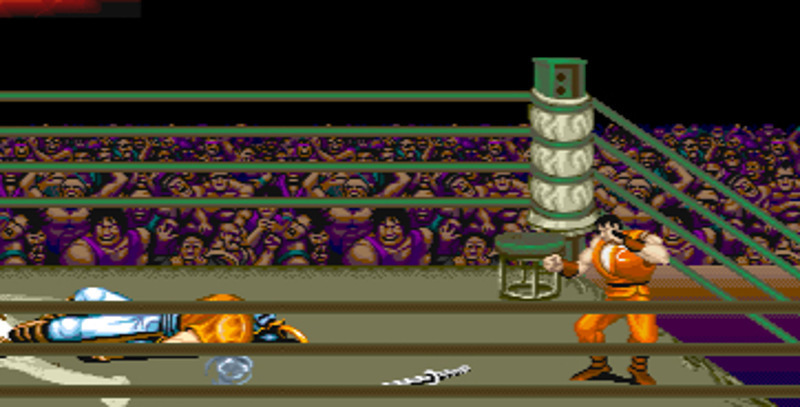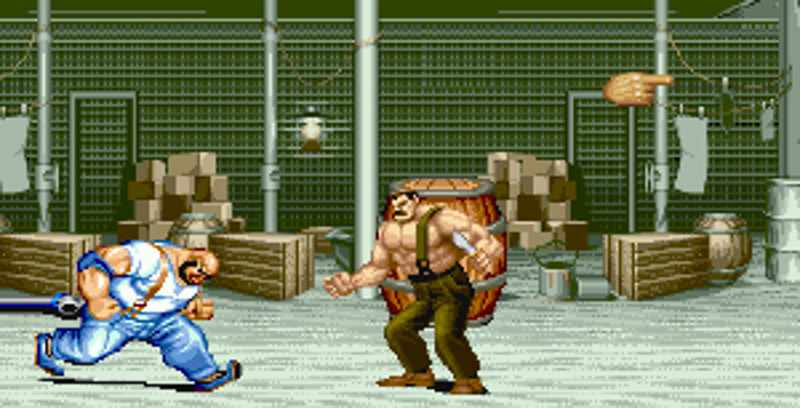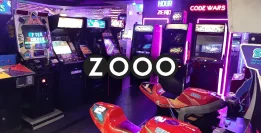
Beat’em ups have the reputation of being a dumb genre. The idea of punching your way through group after group of enemies, once appealing, has become synonymous with boredom and repetition. Like many, I thought the genre was lifeless and dull, a matter of punching enemies harder than they could hit you.
And yet, when I played Final Fight and took the streets of a fictionalized New York city I realized it didn’t matter how hard my character could punch. What mattered was who.
The key to understand Final Fight and, hence, the classical beat’em up is that the player is always outnumbered. There are always four, five or even more enemies on the screen and they are not polite enough to attack one by one. Rather, they try to surround you and, if they do, the result is death.

The player has simple, but effective, tools to prevent this situation. His fists, of course, but also long-ranged kicks and even some aerial attacks. Most importantly, the player can grab enemies and throw them, using them as an improvised projectile to keep enemies at bay.
Final Fight is a game of crowd control, of walking right into an ambush and being victorious because you put all the enemies on the same side of the screen. It’s not only not a dumb game, it’s actually one big puzzle powered by tricky enemy behavior and placement.
Some of it is quite simple. Filler enemies, like Breds, just come in big numbers while the sneaky Js prefer to attack you on the back and retreat if you get close to them. In fact, it’s extremely simple and not even the larger, nastier enemies pose a threat on their of their own.

The actual threat comes from combining those enemies. An encounter with a couple Breds and the knife-wielding El Gado can be easily solved by repeatedly throwing the later. But if we add an enemy that requires a lot of attention on its own, like a boss or the hard-hitting Andore, things get tricky. It’s no longer a matter of killing off a dangerous enemy but of survival and careful engagements.
It’s surprisingly strategic. There’s a small amount of randomness in the enemy behavior that forces the player to approach enemies as a system and not as a pattern. That is, Andore won’t always punish you for trying to hit him straight on nor he will always rush towards you. But you need to take that possibility into account.
The challenges presented don’t end when enemies hit the ground, either. One of the interesting things about Final Fight is that each enemy rises from the floor at a different speed. Some do it faster, some do it slower and, hence, they scramble. This forces the player to constantly adapt and keep them in check, even after winning the first round.

Still, the main problem with Final Fight is that a series of design oversights make it extremely punishing. There are many situations in which a small mistake can snowball into more damage than the designers ever intended the player to take. In fact, there are situations in which the player was not meant to take damage at all and, yet, he does.
For example, there’s one enemy that charges at the player twice in a row. And that’s fine! If you are hit during the first charge you can avoid the second by not raising from the floor until he finishes attacking. But if there are two of them you can’t do that, because avoiding the first means being hit by the second. Hence you can easily lose two thirds of your life-bar for not dodging one attack.
Similarly, the “desperation move” is meant to be a way to get out of difficult situations: You press it and enemies are pushed away at the cost of some health. But, sometimes, it doesn’t work. The enemy attack goes right through it because you are not invincible through the attack’s duration.

These and other flaws, like the lack of invulnerability when picking up items, were fixed by Capcom in later games which is actually another of Final Fight’s problems: There’s not much of a reason to play it over later entries in the genre. Compared to the likes of The Punisher, Cadillacs & Dinosaurs or Battle Circuit; Final Fight seems overly stiff and simplistic.
This is not to say it’s a bad game because it’s not. The problem is that it has been largely superseded by its successors just like it largely superseded the early beat’em ups made by Konami and Tecmo.
With each of its successors improving on its formula, all Final Fight has going for it is its art style. Those big, colorful sprites and gritty city backgrounds still shine today, even if half of them were ripped from Streets of Fire. It’s just not enough. Except for a narrow set of circumstances, Final Fight is all but obsolete.
| FINAL FIGHT (1989) | |||
|---|---|---|---|
| DESIGN | Akira Nishitani, Akira Yasuda | DEVELOPMENT | Capcom |
| MUSIC | Yoshihiro Sakaguchi. Additional work by Manami Matsumae, Junko Tamiya, Harumi Fujita ,Yasuaki Fujita, Hiromitsu Takaoka and Yoko Shumomura (Uncredited) | ||



